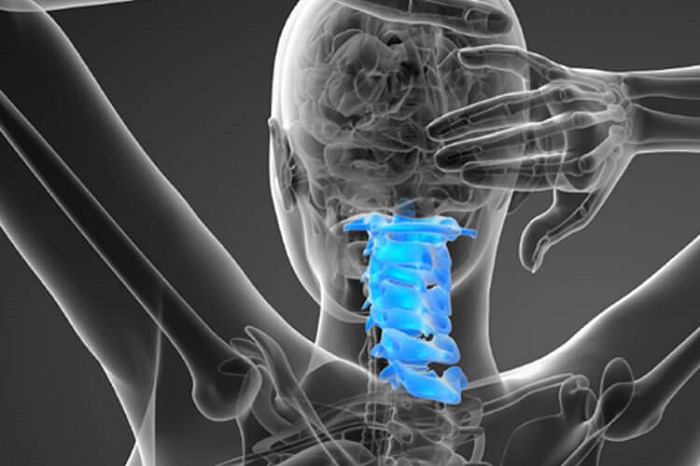An Italian physician by the name of Dr. Antonio Costantini has reported the use of megadose thiamine for the successful treatment of Parkinson’s disease and several other diseases. This post is organized from “Frequently asked questions about high-dose thiamine (HDT) therapy” on the now closed Facebook group Parkinson’s and Thiamine HCL.
Dosing Thiamine
A standard dose of thiamine to start the treatment protocol does not exist. The dose that he and his group have been using is 4 g/day as tablets by mouth or 2 injections of 100 mg each, twice a week. Because he has had several years of experience, the right dose has always been tailored to the specific characteristics of the patient. On the basis of their observations the right dose is the one that suppresses the majority of the non-motor symptoms and at least 50% of the motor symptoms, without causing over-dosage symptoms. This is an important point because the dose of thiamine can be too little or too big, making me think of the ancient Chinese whose philosophy was expressed as Yin and Yang for too little or too much. The right dose is found when the disturbed balance is suppressed and the patient regains normal balance. On the basis of their experience, if symptoms are exaggerated at the beginning of treatment, it may mean that the dose of thiamine is already too high for the needs of the specific patient. One of the questions that was asked was whether thiamine could be administered in association with any of the existing therapies for Parkinson’s disease. The answer was that it is compatible with any drug on the market.
Course of Improvement
The oral therapy produces an appreciable improvement within a few days, but the patient may not realize it. Within 30 days in most of the cases, an appreciable improvement of the symptoms is detected by the patient as well. Further improvement is observed within the following 2-3 months. The effectiveness of one intramuscular injection of 100 mg is nothing short of impressive in all cases they have observed. It determines an almost sudden improvement, clearly appreciable by the doctor as well as by the patient. The tremor, one of the major symptoms in this disease, is strikingly reduced.
Obviously, one of the questions was whether there were any side effects from high dose oral thiamine. The answer was that the only known side effect associated with this therapy was from over-dosage. When the dose of thiamine is higher than the needs of the patient, there is worsening of the symptoms of the disease and reduction of the dose usually results in improvement. If high oral doses of thiamine are taken later in the day (evening or night) there may be difficulties in falling asleep. If taken in the morning or early afternoon, patients reported an improvement in their sleep. Patients reached the peak of improvement within 3-6 months and no further improvement was observed past that.
Thiamine is highly effective with all the symptoms, both motor and non-motor. It is best to start with low-doses, increasing gradually until the symptoms improve satisfactorily. More than 2,500 patients have been treated. All responded favorably, regardless of severity. Many have been following the clinic protocol for 3-5 years and progression of the disease appears to have been halted. This is truly an amazing story. How many more patients could be helped if their doctors would put aside their skepticism and humbly try to learn more about the use of high-dose thiamine?
Only one patient was unable to tolerate the high dose. Each time she tried, it caused vomiting. Finally, they state that they prefer to see how the high-dose thiamine performs before adding any more dietary supplements.
It is pretty clear that neurologists need to study this pioneering program for Parkinson’s disease. These results have been published in peer reviewed medical journals. Dr. Costantini unfortunately succumbed to Covid-19 but I have no doubt that his colleagues will continue to explore this remarkable innovation Of course, using a vitamin in large doses turns it into a drug, an entirely new concept in medical treatment and it is natural that skepticism will have to be overcome. However, the results are so dramatic that they cannot be ignored.
Mechanisms of High Dose Thiamine Therapy
Although we know a lot about the activity of thiamine in the body, there are aspects about it that are still shrouded in mystery. We have known for a long time that it is a cofactor for many enzymes that function to produce energy. There is little doubt that Parkinson’s disease, like many other human diseases, is an energy-deficiency condition, so the use of thiamine in its treatment would make sense. However, much more information is required concerning its non-enzymatic functions. To become active in the body, thiamine has to have two molecules of phosphate added to it to act as a cofactor. Its non-enzymatic form includes thiamine triphosphate about which we know surprisingly little, in spite of the fact that it was discovered 70 years ago. This treatment of a severe crippling disease forecasts the arrival of Orthomolecular Medicine as the orthodox form of therapy.
Final thoughts
The use of a vitamin in megadoses to treat disease is brand new. It seems that enough clinical evidence of its benign, non-toxic effect has been reported by this Italian group to “set the world of medicine on fire”. The concept of using a molecule, essential to life, in large doses as a drug will undoubtedly require further confirmation, but it would be absurd to ignore these results. The “exactly right dose” seems to confirm the long held philosophy that “the truth lies between two extremes”.
We Need Your Help
More people than ever are reading Hormones Matter, a testament to the need for independent voices in health and medicine. We are not funded and accept limited advertising. Unlike many health sites, we don’t force you to purchase a subscription. We believe health information should be open to all. If you read Hormones Matter, like it, please help support it. Contribute now.
Yes, I would like to support Hormones Matter.
Image by Annick Vanblaere from Pixabay.














Does anyone know if the thiamine protocol would be beneficial to someone with CIDP? With nerve issues and inflammation, I would like to think it might help.
And if so, I like one start out the same as one would with Parkinson’s on dosage?
Costantini reports that HDT treatment, especially when given orally, has only minor side effects. Lange et al (NEJM 2004), have previously reported that administration of high doses of vitamins B, namely folate, vitamin B6, and vitamin B12, especially when given together, after coronary stenting may increase the risk of in-stent restenosis and the need for target-vessel revascularization. I am wondering whether this risk exists also for thiamine, if there is any study or report on that and what is your experience in this respect. Is there any report of a follow-up carried out in patients with coronary stent given DHT? Given the age at which Parkinson’s disease is diagnosed, the no. of persons with chronic, coronary heart disease and Parkinson’s disease, it is likely that this issue is relevant to many persons with Parkinson’s disease.
Costatini said that thiamine alone seemed to be best “until the ideal dose” has been found by clinical observation. Then the other nutrients could be added. I have found that solitary thiamine can result in a “miraculous” response where energy deficiency is responsible.
Dr. Lonsdale, given your previous writings about the superiority of TTFD Thiamine over Thiamine Hydrochloride when it comes to improving intestinal health and crossing the blood-brain-barrier, I wonder if you have thoughts as to whether TTFD Thiamine might work as well as, or perhaps better than, the HCL Thiamine for Parkinson’s? Dr. Constantini only suggests that the synthetic Benfotiamine should be avoded as it did not produce the same result, but he does not mention TTFD (perhaps he did not know about it). I ask because my husband has Parkinson’s and has had good effect from Thiamine HCL in combating the fatigue and stamina issues related to his PD, but it has had no effect on his intestinal issues (SIBO symptoms and constipation). He takes no PD medications, only the herb mucuna pruriens in a pure l-dopa form, along with the Thiamine HCL. Thanks for any thoughts you may have on this.
Several comments: A researcher in Belgium has studied thiamine for years. He reported in a
mouse study that Benfotiamine did not get into the brain, whereas TTFD did. You do not mention the dose of ThCL. Dr Castelloni used as much as 4G(4000mg). If you wish to try a thiamine derivative, TTFD would be the best choice and you will have to experiment with the dose. It is non toxic
I just found this new study:
“Oral benfotiamine reverts cognitive deficit and increase thiamine diphosphate levels in the brain of a rat model of neurodegeneration
Ruan Carlos Macêdo de Moraes et al. Exp Gerontol. 2020 Nov.”
Apparently benfothiamine does increase brain levels of thiamine. I’m glad to hear that. The only selling point of TTFD, and sulbutiamine, was that they increased levels of thiamine in the brain, and supposedly no other forms did.
I’m glad benfotiamine increases brain levels too. TTFD was not enjoyable.
Everytime I increased the dosage I was taking I would feel crappy. I don’t think it was a “paradoxal reaction”, I think TTFD mobilizes toxins and heavy metals which makes people feel awful, so it was more of a herxheimer reaction.
You don’t hear about these kinds of problems with basic Thiamin HCL or benfotiamine, or even sulbutiamine. It’s mostly just with the TTFD form. The highest dose I ever worked up to with TTFD was 400mg. Would never be able to get anywhere close to 4 grams a day with TTFD, not to mention how expensive it would be. Plus there’s only 1 company in America that even makes it.
Bettendorff published his study in mice and you cannot always extrapolate animal studies to humans. I must emphasize that ALL thiamine derivatives do the same thing, deliver thiamine to the cells. Dr Costantini, who has treated Parkinson’s disease successfully with high dose thiamin used thiamin hydrochloride. I do not know why TTFD was bad for you. It may be due to the action of the prosthetic group, even though it has been well studied. Please understand that high dose thiamin is a brand new method of treatment and you are inevitably a “guinea pig”. To have a “drug” that has no toxicity is a genuine improvement in the art and science of medicine.
My husband’s Parkinson’s disease is totally reversed! all thanks to tree of life herbal clinic visit (www .treeoflifeherbalclinic .com)
How long did it take for your husbands parkinsons disease to leave?
Maybe it can help with the use of soy lecithin, 3 capsules a day helped a lot the intestinal health of some people I know
I have been taking high dose thiamine HCL since 2/1/2021. I began taking thiamine in higher doses (began with 300mg 2Xday in October of 2020) because I had developed a functional thiamine blockage from taking Bactrim antibiotic the prior summer. This article saved my life by pointing me in the right direction: https://www.hormonesmatter.com/bactrim-an-anti-folate-anti-thiamine-potassium-altering-drug/
Last fall I tried to take TTFD but I could not tolerate it; it gave me a terrible headache. I don’t know whether it was due to my load of heavy metals that I carry or if it was because my glutathione was very low. I was able to tolerate high dose thiamine HCL without any issues after finding my optimized dose.
I carefully followed the protocol suggested on Dr. Costantini’s site. Here is a link: https://highdosethiamine.org/hdt-therapy/
from this link:
Finding the Correct Dose
The correct dose varies on the basis of:
Duration of the disease (the longer is the duration of the disease, the higher will be in general the doses;
Severity of the symptoms and rate of progression of the disease;
Weight and physical characteristics of the patient;
Sensitivity/responsiveness to the treatment.
In order to determine the right dose, we usually stick to the following protocol.
In case of recent onset of the disease in patients whose weight is between 50 to 65 kg (110 – 145 lbs), we begin the therapy with two grams of thiamine per day, before and after lunch.
In case the patient weighs more, the dose can be three grams per day, always divided into two administrations.
Oral thiamine should not be taken with juices or any sour beverage, water only.
The equivalent Intramuscular administration of thiamine would be:
For 2 grams/day orally = 1 x 100mg injectable solution per week;
For 3 grams/day orally = 2 x 75mg injectable solution per week;
For 4 grams/day orally = 2 x 100 mg injectable solution per week.
NOTE: When it is administrated through intramuscular injections treatment could lead to allergic reactions (we observed 4 cases in 2,500+ patients). Mainly there are dermatological rushes and allergic phenomena.
-end-
I was relieve to find Dr. Costantini’s dosage information because I had worked my way up to taking 1500mg/day of thiamine HCL on my own and I needed to try a higher dose but didn’t want to damage myself. According to Dr. Costantini’s dosage information and my weight, I would probably need 2.5 grams/day, divided into two doses, one in the morning and one by 3:00pm.
I increased my dose from 1500mg/day up to 2 grams/day (=1gram morning and 1 gram afternoon). On the morning of the third day on this dose, my digestive tract normalized. For many years, I have had low stomach acid, SIBO, IBS. The improvement was dramatic. My extreme inflammation issues also resolved. The tremor in my right hand disappeared.
After a week on 2 grams/day I decided to increase the dose to 2.5 grams/day. After the first day on this increased dose, when I went to bed that night, I experienced shooting electrical zapping pains in my thighs. I read that this is a symptom of taking too much thiamine hcl. I reduced my dose back to 2 grams/day, having determined that it is my optimum dose. My autonomic symptoms have gone away and my inflammation has resolved.
I learned that if I take a dose of thiamine HCL in the early evening (6:00pm), I go to sleep fine but then wake up at 2:00am with a jolt, probably because the thiamine lowered my blood sugar which raised my adrenaline and cortisol. I do better if I stick with taking the second dose of thiamine HCL by 4:00pm at the latest.
I am very grateful for HormonesMatter and the work of Dr. Chandler Marrs and Dr. Lonsdale. This has been a long and lonely (but successful!) recovery because main stream medicine only offers patented pharmaceutical drugs. I’ve learned the hard way to always research pharmaceutical drugs yourself before taking them. Even if you’re hurting.
Thank you so much, Susa for this informative post. I am like you in that I do not follow the medical system nor do I believe in big pharma drugs. I am embarking on using thiamine for my husband who was recently diagnosed with Parkinson’s. For now his symptom is only slight tremor in left hand. I have read that thiamine works, but finding the right amount will be a challenge. In addition, my hub has a hard time taking pills and he’s so picky with tastes. Any other info you’d like to share would be greatly appreciated.
You might find that sharing the videos of Dr. Costantini’s Parkinson’s Disease patients (before & after treatment) with your husband might help to get him on board with swigging down thiamine hcl water. You get used to the taste, sort of. I’ve found too that after drinking the thiamine water for several months, my swallowing ability has normalized and things don’t get stuck going down anymore. Here’s the link: https://www.ultimaedizione.eu/videos-parkinsons-patients-treatment/
I could find very little information on how Dr. Costantini was distributing his dosages in previous studies treating chronic fatigue and fibromyalgia patients. Can only assume it would be as a single dose of 600-1800mg, considering they use about 2g each dose for Parkinson’s.
I know it’s still too early for science to establish guidelines that would work for any individual, but it would be helpful if we could have a FAQ in Hormonesmatter with the most commonly used dose ranges and protocols for each application and each type of thiamine supplement. Practical information such as starting doses, how to distribute it throughout the day, how to increment, maintenance dose, how to adjust, how long should the therapy last and how to interrupt it, if a taper is necessary, etc… is still pretty unclear.
I found a couple of studies by A. Costantini this morning:
https://www.liebertpub.com/doi/10.1089/acm.2011.0840 and https://www.liebertpub.com/doi/10.1089/acm.2012.0612
There’s overlap with Chronic Fatigue Syndrome and it is discussed, along with dosages. Dr. Costantini always determined the patient’s dose per day, divided it into two doses/day, one in the morning and one after lunch around 3:00pm. If taken later in the day, it causes sleep disturbance.
”Parkinson’s disease” Vitamin B1 use instructions : Join my Facebook group Parkinson’s thiamine hcl https://m.facebook.com/groups/232260083958797